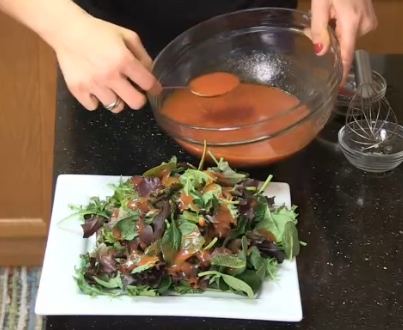In this video, I demonstrate my recipe for baba ghanouj, a Middle Eastern dish made with roasted eggplant and tahini. I am a huge eggplant fan, so baba ghanouj is naturally one of my favorite dishes in the world. If you like the flavor of hummus, you’ll most likely love baba ghanouj. It’s basically hummus’s more exotic and dramatic big sister. Like hummus, there’s lots of garlic, creaminess from tahini (sesame paste), earthy spices, and usually lots of olive oil.
In my recipe, I omit the olive oil and rely on the tahini alone to provide the fat and butteriness, and you’ll see it does the job just fine. I also leave the skin of the eggplant on, which is not typical of most baba ghanouj recipes, unfortunately. Eggplant skin is rich in nasunin, a potent antioxidant that protects cell membranes from damage.
You can enjoy baba ghanouj with pita, veggies, spread on a sandwich or just by itself. Watch and I think you’ll find it becomes a favorite of yours, too.
Ingredients:
1 large eggplants (totaling 2 lbs)
2-3 tablespoons roasted tahini (sesame paste)
1-2 garlic cloves, finely chopped
1 teaspoon ground cumin
2 ½ tablespoons lemon juice
Salt and cayenne pepper to taste
1 tablespoons chopped parsley
Instructions:
1. Preheat oven to 400°F. Poke the eggplants in several places with a fork. Cut the eggplants in half lengthwise and place on a baking sheet, cut side down, and roast until very tender, about 35-40 minutes.
2. Remove from oven and allow to cool for 15 minutes.
3. Remove the eggplant skin and scoop flesh into a large bowl and mash well with a fork.
4. Combine the eggplant, minced garlic, tahini, garlic, cumin, lemon juice, the salt, and a pinch of cayenne. Mash well. You want the mixture to be somewhat smooth but still retaining some of the eggplant’s texture.
5. Allow the baba ghanouj to cool to room temperature, then season to taste with additional lemon juice, salt, and cayenne. If you want, swirl a little olive oil on the top. Sprinkle with fresh chopped parsley. Serve with pita bread, crackers, toast, sliced baguette, celery, or cucumber slices.









